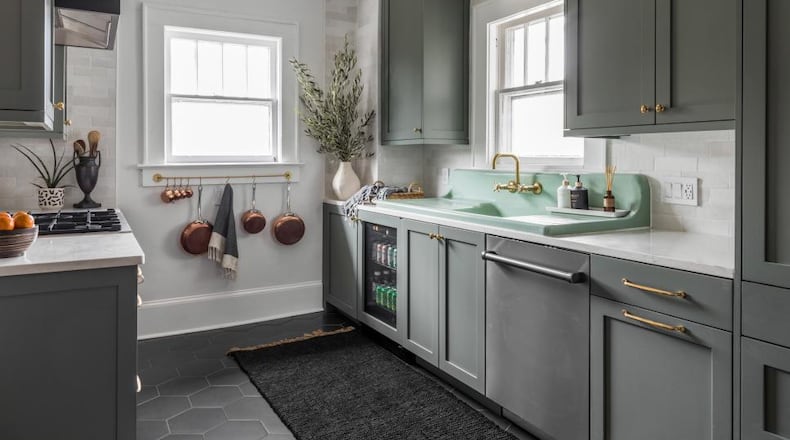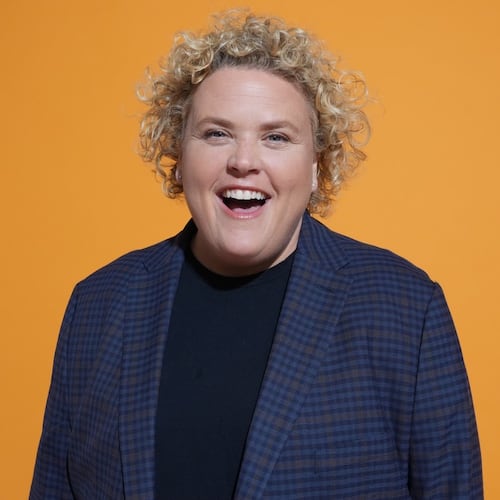Many of our misconceptions about interior designers are summed up in Tim Burton’s 1988 tongue-in-cheek horror film “Beetlejuice.” Otho Fenlock, a pretentious black-clad interior designer, sets out to transform his client’s vintage farmhouse into an ’80s-meets-gothic temple.
“There’s absolutely no organic flow-through,” Otho sniffs upon first gander at the homespun digs.
Long thought to be the purview of the 1%, or at least the very well-heeled, interior design is not just for people with wealth and insecurities who then get bossed around by snobs like Otho imposing their own taste.
In reality, hiring an interior designer can be one of the smartest decisions you can make to alleviate the stress of a renovation and make sure the end result of your project is everything you dreamed of.
I learned this firsthand last year when I hired an interior designer to redo the kitchen and a bathroom in my 1930 home in metro Atlanta. An interior designer can be a life — and sanity — saver. Since then, I have been proselytizing about the value of interior designers.
Credit: Courtesy of Felicia Feaster
Credit: Courtesy of Felicia Feaster
In a world of sometimes-shady contractors and limitless design choices, it can be invaluable to have someone run interference between you and the workers with mallets in their hands.
My interior designer kept me on budget and helped me reimagine the “organic flow-through” of my home.
In particular, interior designer Gabriela Eisenhart of Atlanta’s Silo Studio Design also freed me from that omnipresent 21st-century dilemma: the paralysis of too much choice.
A kitchen renovation alone can be daunting. Think countertops, toe kicks, drawer configurations, cabinets, storage, kitchen islands, fixtures, appliances, wall color and tile.
Then there is the nightmare of finding a contractor who won’t run away with his tools and leave a partially framed addition flapping in the February wind. As anyone who has done a renovation knows, it is often a harrowing, white-knuckle experience. Fortunately for me, Eisenhart came with her own contractor and team.
Credit: Tomas Espinoza
Credit: Tomas Espinoza
Katie Miner is general manager at Atlanta Decorative Arts Center, a hub for interior design studios and showrooms in Peachtree Hills. During her own home renovation, Miner worked with a builder, an architect, a kitchen designer and an interior designer, Traci Rhoads of Atlanta’s Traci Rhoads Interiors.
“Every single moment throughout the project, each one of those firms and people that were involved took my vision to the next level in a place that I could have never gone,” Miner said. “And I’ve been in this industry for 25 years.”
Common misconceptions are that clients are dripping with money and that designers are people like Otho in “Beetlejuice” who will impose their one-signature style on your space.
But Eisenhart said that 80% of her clients are solidly middle class in defiance of the perception that designers work only with society’s upper echelons. And a good designer will “want the home to feel like a reflection of their client,” Miner said.
Eisenhart likens the critical first interview between a designer and her client to dating. You should make sure that the designer “gets you,” she said.
Credit: Courtesy of Felicia Feaster
Credit: Courtesy of Felicia Feaster
“Even if they’re there to make it easier for you, you’re about to go through a really stressful portion of your life,” Eisenhart said. “So make sure you just enjoy that person and you enjoy communicating with that person.”
Miner recommends you do research before the first interview even happens.
“I always encourage people to go look at things like a website, social media — Instagram is huge in our industry,” Miner said. “See if the kinds of things they’re designing, if that resonates.”
In addition to establishing essential rapport, Miner recommends determining the scope and cost of the work you are about to commission.
“I think everyone needs to be transparent about billing and pricing and how it’s done. I think that’s first and foremost,” Miner said. She notes that designers work in a variety of ways. Some charge an hourly rate of $50 to $500, while others charge a flat fee. Eisenhart says her fees for a typical project range from $5,000 to $15,000.
Credit: Studio Jaki Photography
Credit: Studio Jaki Photography
Less-experienced designers will charge a lower rate than that, and those who cater to high-end customers will charge far more. Rates may also depend on someone’s training. Georgia doesn’t require an interior design degree or certification to work on residential projects, so some interior designers are self-taught.
For Eisenhart, another critical talent is a designer’s ability to reimagine the use of space, an especially important skill in older, bungalow-style homes where space can be at a premium and changes must be carefully planned.
“Designers’ understanding how to use the space is incredibly important,” Eisenhart said.
Also vital is budget management, she said.
Many of us have witnessed a simple renovation reveal behind-the-scenes problems that turn your project into a money pit. Good interior designers will plan for hidden contingencies.
“With older homes, I’ve learned that you really do have to go: OK, if $100,000 is your hard line, we need to make sure our budget is $80,000 because we will find problems,” Eisenhart said.
Also, considering how psychologically grueling many home renovation projects can become, don’t underrate the importance of having a design cheerleader in your corner, helping you through the rough spots.
“A designer or design company who manages it allows you to enjoy the process of your house transforming,” Eisenhart said. “Whether it’s just furnishing or whether you’re doing a full renovation, it allows you to make decisions clearly and relax and not have the stress and weight of the whole project on your shoulders.”
Felicia Feaster is a longtime lifestyle and design editor who spent 11 years covering gardening, interior design, trends and wellness for HGTV.com. Felicia is a contributor to MarthaStewart.com and has been interviewed as a design expert by The New York Times, Forbes and the Associated Press.
About the Author
The Latest
Featured





